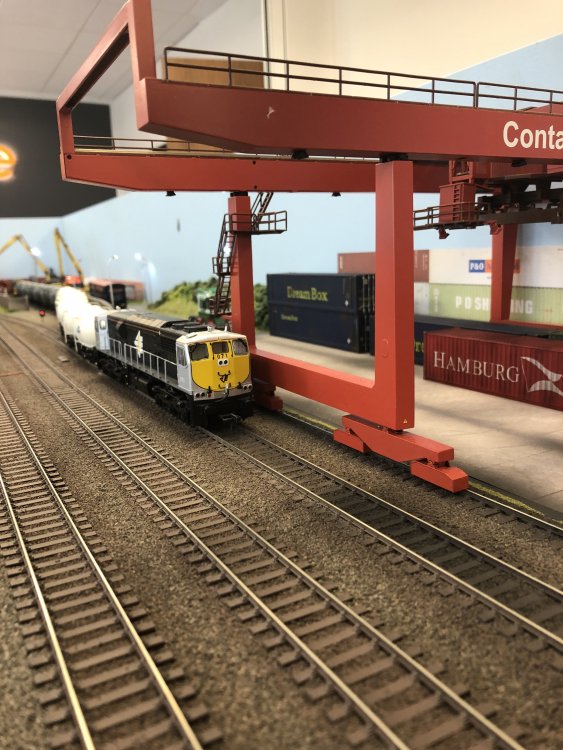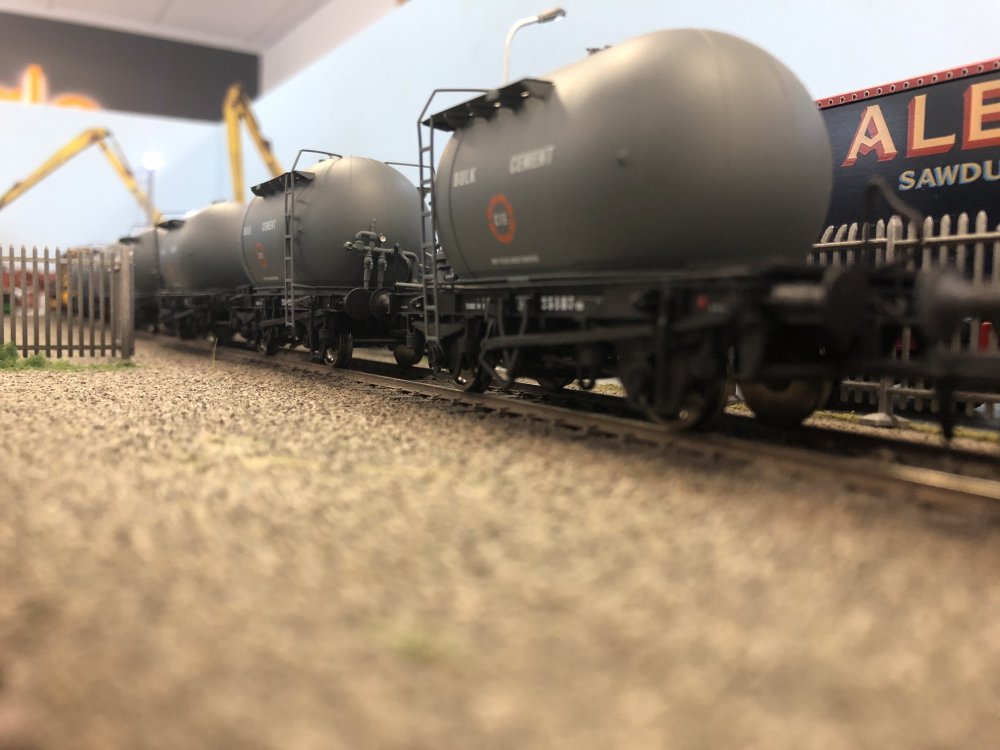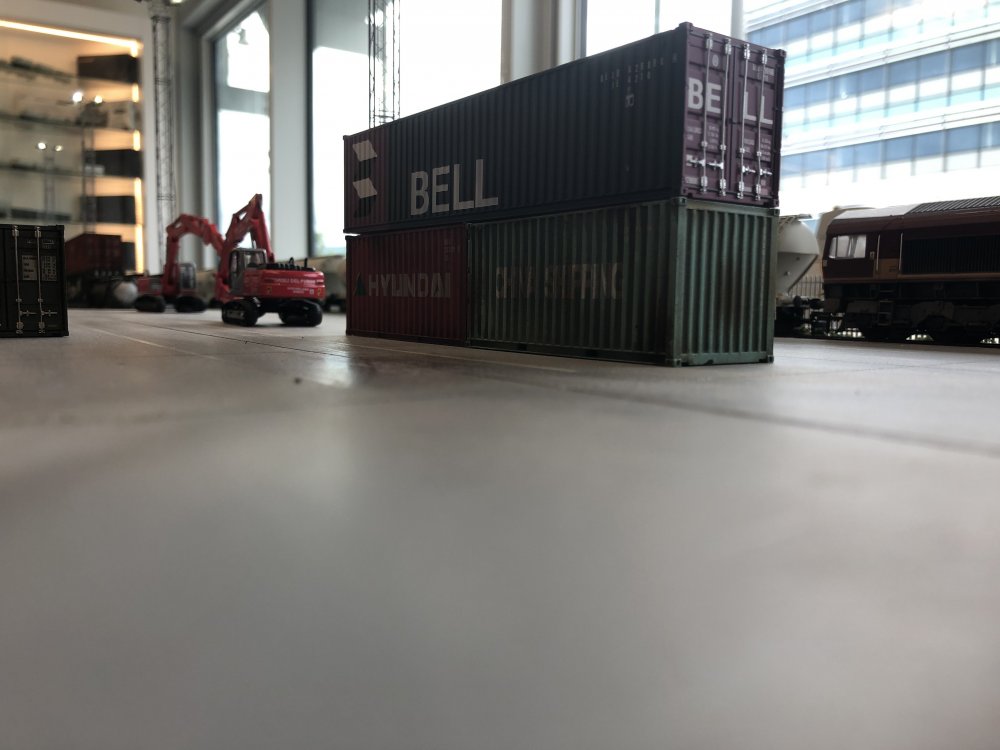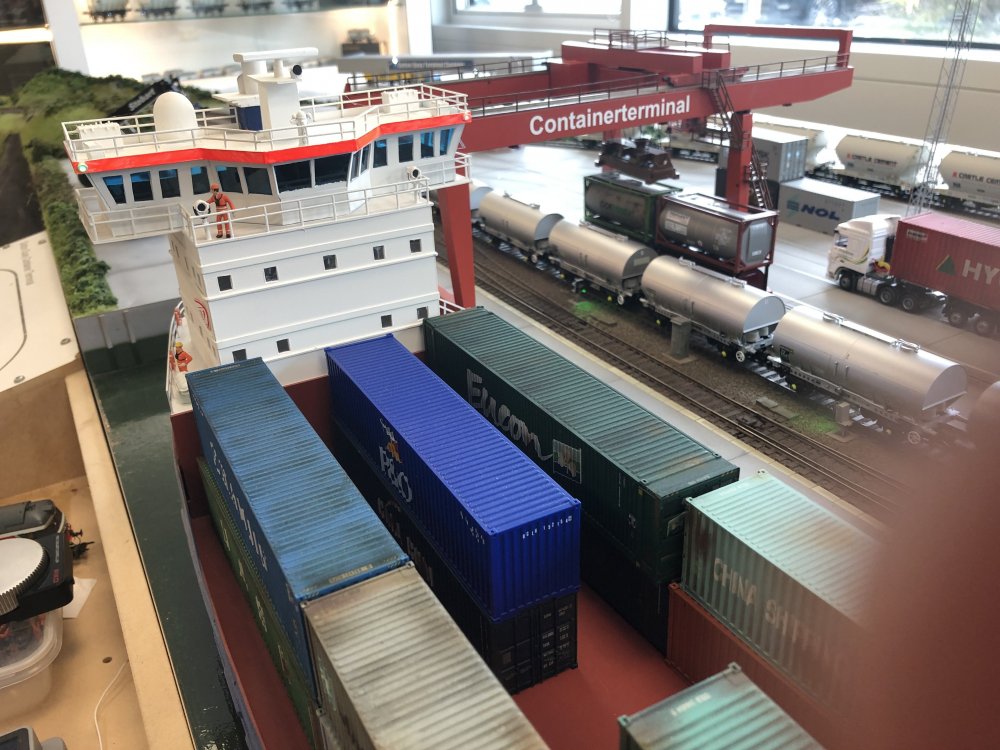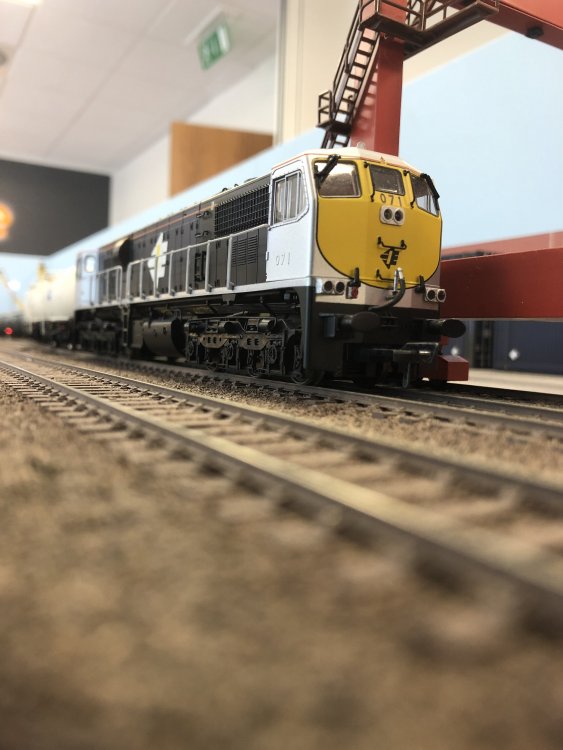-
Posts
15,849 -
Joined
-
Last visited
-
Days Won
393
Content Type
Profiles
Forums
Events
Gallery
Everything posted by jhb171achill
-
Indeed; fastenings irrelevant. You could have a dud and a real thing attached to a modern garden gate, by the same screws....
-
I'd be half inclined to sell the house and buy the other 80%!
-
CIE Laminate Coaches - Worsley Works - ECMbuild in 4mm
jhb171achill replied to murrayec's topic in Irish Models
As far as I remember there was a sliding door where the passenger area was adjacent to the guards area. Certainly in all variations I remember - with the exception of an elderly converted Bredin I was in once on the up Sligo night mail. But there were variations on many themes among the laminates by the time they were all withdrawn. I recall being in a laminate standard in 1972 with a most peculiar layout of doors, vestibule & jax at one end. Dunno what number it was, just remember the inside. It was on a midday down Cork with a newly-painted “Supertrain” Nos. 121+12?... -
Weathering fixes that....
-
Bruce01, that's a good collection of stuff and seems in very good condition. There's a bit of money's worth there - don't let it go for a song. Apart from ebay, you might check out the Gauge 0 Guild, in whose magazine you might be able to place an ad. Before you name prices look up what each type of item - if there's an equivalent - is getting on ebay. If you decide to advertise here, the mods' rule is that you state a price here.
-
Even beforehand - CIE had it from the outset (1945) when as you say it was copied from the DUTC (who introduced it in 1941). The "snail" itself was based on the London Transport logo, but with "wings" added. CIE was nationalised in 1950.
-
Some have a weathered CIE logo on diagrams above? Is that on the models? Excellent realism!
-
Flying snail? Mk 2s wouldn't have carried it, as it was suoerceded some years before any Mk 2 stock came here, and it was a CIE logo, whereas NIR had the Mk 2 stock. Pre-Craven types of coaches carried it. Some models have been produced in CIE green with the "snail", by Bachmann, Silverfox and Irish Freight Models. Most are limited editions - check their websites for updated. The "flying snail" was intoduced in 1945 and discontinued after winter 1962/3.
-
CIE Laminate Coaches - Worsley Works - ECMbuild in 4mm
jhb171achill replied to murrayec's topic in Irish Models
Looking amazing, Eoin, can't wait to see finished job! Excellent finish. -
Absolutely superb - thanks. If mine exudes half that realistic atmosphere I'll be happy.... Presumably ferts will feature at some stage!
-
That rake of laminates... could we see a closer look? Are they Silverfox?
-
Great to see it all back, folks. Well done to all concerned.
-
Possibly, yes..... I recall seeing coaches in scrap lines. The green was by now a flattish shade - hard to describe. The lighter green was by this stage showing a greenish creamy colour, rather than white as such. Maybe some sort of creamy colour..... I'll experiment with paints at some stage. I also seem to remember that if really worn, it showed as streaky, like the paint was washing off to show the darker colour underneath. On my first visit to Inchicore (mid 60s?) I wish I'd had a camera... there was all sorts of stuff about in scrap lines...!
-
That's a suitably shabby appearance indeed! Postal vehicles rarely seemed to be at the top of the queue when men with paintbrushes were about! I have an old Hornby coach which with a bit of alteration will look like one of the last pair of WLWR brake 3rds. I have painted it a flattish green to make it look like the earlier dark green turning as shabby as yours. The green looks right for this, but I am not sure how to go about adding the "eau-de-nil" lining to match the faded shabbiness - indeed, this lighter shade on a badly-weathered coach seemed to fade even more than the dark green. I had thought of approaching a manufacturer of lining to make a batch of "weathered" lining, but probably too much effort and expense for too little use. I will eventually have no more than two or three vehicles that i would want to look as worn as that.
-
Nice trackwork - great potential! I'm fiddling about with ideas for a terminus at the moment - I thought a 5'3" version of Letterkenny's track plan might be a good size for a layout.
-
According to jhb171Senior, his father considered the 400s a mixed bag - good ones and bad. Doubtless, as you say, due to the many variations as time progressed.... I wondered myself why not more 500s.....
-
At IRM Towers, many gems could be seen when I made a business call. The choccy bikkies were good too..... 9D376EAB-D0F9-4ADC-AEDF-E3E2F5888F3A.MOV 28C5614A-0336-4873-B395-FC37BE6E7407.MOV
- 4 replies
-
- 12
-

-

-
Yes, Dive, I have two black’n’tan 141s, and I’ll have both anA and a 121 in that livery too. Engines in the old BnT livery were around almost until 1980 - when I did much travelling in 1976/7 they were everywhere. So BnT livery haulage of these is perfectly appropriate, as are Supertrain and Tippex liveries. If the budget holds, I’ll probably take six or eight..... Will you be able to buy pallets separately in order to have them sitting on loading bays ready to be loaded, or having been unloaded?
-
They're well out of my era but............. might have to get some! (And my guilty secret might be running them behind a J15.....!)
-
Worsley do a G class kit, and Silverfox do s RTR G..... A “D” can be reasonably “botched” from a British 08. But a Murphy/IRM-standard RTR “E” would be the thing to have. I would take two.....
-
A couple of carriages on the T & D were rebuilt as brakes. I think there were two thus treated, though I’d have to check, but possibly three. One, as seen above, retained windows but the other as also seen above, didn’t. The Great Southern rebuilt them as goods brakes on the T & D, and following its closure in 1953, one was transferred to the C & L.
-
That is a thoroughly superb job!
-
County Donegal bus release (Oxford)
jhb171achill replied to minister_for_hardship's topic in Bus models
Nice looking thing. I wonder if they would do a couple of standard CIE 1950/60s types....? -
Never a truer word in the history of the internet. I live in hope for this too! Don't start me on druggies and joyriders! When I hear of the likes of these wiping themselves out I rejoice; “the world is now a better place”!
.png.c363cdf5c3fb7955cd92a55eb6dbbae0.png)


